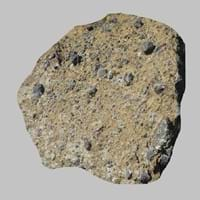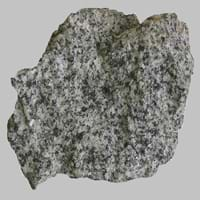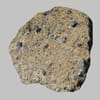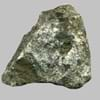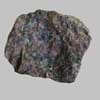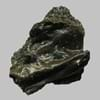Definition
Hyaloclastite is an aggregate of fine, glassy debris formed by the sudden contact of hot, coherent magma and cold water or water-saturated sediment
Diorite is a grey to dark-grey intermediate intrusive igneous rock composed principally of plagioclase feldspar,biotite, hornblende, and pyroxene
Discoverer
Unknown
Unknown
Etymology
From hyalo + -ite
From early 19th century coined in French, formed irregularly from Greek diorizein distinguish
Class
Igneous Rocks
Igneous Rocks
Sub-Class
Durable Rock, Soft Rock
Durable Rock, Hard Rock
Other Categories
Fine Grained Rock, Opaque Rock
Coarse Grained Rock, Medium Grained Rock, Opaque Rock
Texture
Pyroclastic
Phaneritic
Color
Brown, Grey, Yellow
Black, Brown, Light to Dark Grey, White
Durability
Durable
Durable
Interior Uses
Countertops, Decorative Aggregates, Homes, Interior Decoration
Decorative Aggregates, Interior Decoration
Exterior Uses
As Building Stone, As Facing Stone, Paving Stone, Garden Decoration, Office Buildings
As Building Stone, As Facing Stone, Garden Decoration
Other Architectural Uses
Curbing
Curbing
Construction Industry
Building houses or walls, Construction Aggregate
As Dimension Stone, Cement Manufacture, Cobblestones, Construction Aggregate, for Road Aggregate
Medical Industry
Not Available
Not Available
Antiquity Uses
Artifacts, Jewellery, Monuments, Sculpture
Artifacts, Monuments, Sculpture, Small Figurines
Commercial Uses
Cemetery Markers, Creating Artwork
Creating Artwork, Curling
Types
Welded tuff, Rhyolitic tuff, Basaltic tuff, Trachyte tuff and Andesitic tuff.
Not Available
Features
Always found as volcanic pipes over deep continental crust
Typically speckled black and white.
Archaeological Significance
Famous Monuments
Not Available
Not Available
Famous Sculptures
Not Available
Not Available
Pictographs
Used
Not Used
Petroglyphs
Used
Not Used
Formation
Hyaloclastite is a type of Igneous rock is formed through the cooling and solidification of lava or magma.
Diorite is a coarse-grained intrusive igneous rock which contains large interlocking and randomly oriented crystals and forms when molten lava does not reach the Earth’s surface and cools down in the Earth’s crust.
Mineral Content
Calcite, Chlorite
Albite, Amphibole, Apatite, Biotite, Feldspar, Hornblade, Ilmenite, Magnetite, Muscovite or Illite, Olivine, Plagioclase, Pyroxene, Quartz, Sulfides, Titanite, Zircon
Compound Content
Hydrogen Sulfide, Sulfur Dioxide
Silicon Dioxide
Types of Metamorphism
Burial Metamorphism, Cataclastic Metamorphism, Contact Metamorphism, Hydrothermal Metamorphism
Cataclastic Metamorphism, Contact Metamorphism, Regional Metamorphism
Types of Weathering
Biological Weathering, Chemical Weathering, Mechanical Weathering
Biological Weathering, Chemical Weathering, Mechanical Weathering
Types of Erosion
Chemical Erosion, Coastal Erosion
Chemical Erosion, Coastal Erosion, Water Erosion
Grain Size
Fine Grained
Medium to Coarse Grained
Fracture
Not Available
Not Available
Streak
Not Available
Bluish Black
Porosity
Highly Porous
Very Less Porous
Luster
Dull and Grainy
Shiny
Compressive Strength
Not Available
Cleavage
Not Available
Not Available
Toughness
Not Available
2.1
Specific Gravity
Not Available
2.8-3
Transparency
Opaque
Opaque
Density
Not Available
2.8-3 g/cm3
Resistance
Heat Resistant
Heat Resistant, Pressure Resistant, Wear Resistant
Deposits in Eastern Continents
Asia
Russia
Not Available
Africa
South Africa
Egypt
Europe
Iceland
Finland, Germany, Italy, Romania, Sweden, Turkey, United Kingdom
Others
Not Available
Not Available
Deposits in Western Continents
North America
Canada, USA
USA
South America
Brazil, Colombia
Argentina, Bolivia, Chile, Colombia, Ecuador, Peru
Deposits in Oceania Continent
Australia
Not Available
New Zealand, Western Australia
Hyaloclastite vs Diorite Characteristics
Though some rocks look identical, they have certain characteristics which distinguish them from others. Characteristics of rocks include texture, appearance, color, fracture, streak, hardness etc. Hyaloclastite vs Diorite characteristics assist us to distinguish and recognize rocks. Also you can check about Properties of Hyaloclastite and Properties of Diorite. Learn more about Hyaloclastite vs Diorite in the next section. The interior uses of Hyaloclastite include Countertops, Decorative aggregates, Homes and Interior decoration whereas the interior uses of Diorite include Decorative aggregates and Interior decoration. Due to some exceptional properties of Hyaloclastite and Diorite, they have various applications in construction industry. The uses of Hyaloclastite in construction industry include Building houses or walls, Construction aggregate and that of Diorite include As dimension stone, Cement manufacture, Cobblestones, Construction aggregate, For road aggregate.
More about Hyaloclastite and Diorite
Here you can know more about Hyaloclastite and Diorite. The life cycle of a rock consists of formation of rock, composition of rock and transformation of rock. The composition of Hyaloclastite and Diorite consists of mineral content and compound content. The mineral content of Hyaloclastite includes Calcite, Chlorite and mineral content of Diorite includes Albite, Amphibole, Apatite, Biotite, Feldspar, Hornblade, Ilmenite, Magnetite, Muscovite or Illite, Olivine, Plagioclase, Pyroxene, Quartz, Sulfides, Titanite, Zircon. You can also check out the list of all Igneous Rocks. When we have to compare Hyaloclastite vs Diorite, the texture, color and appearance plays an important role in determining the type of rock. Hyaloclastite is available in brown, grey, yellow colors whereas, Diorite is available in black, brown, light to dark grey, white colors. Appearance of Hyaloclastite is Dull and that of Diorite is Shiny. Properties of rock is another aspect for Hyaloclastite vs Diorite. The hardness of Hyaloclastite is 1-2 and that of Diorite is 6-7. The types of Hyaloclastite are Welded tuff, Rhyolitic tuff, Basaltic tuff, Trachyte tuff and Andesitic tuff. whereas types of Diorite are Not Available. Streak of rock is the color of powder produced when it is dragged across an unweathered surface. The streak of Hyaloclastite is not available while that of Diorite is bluish black. The specific heat capacity of Hyaloclastite is Not Available and that of Diorite is Not Available. Depending on the properties like hardness, toughness, specific heat capacity, porosity etc., rocks are resistant to heat, wear, impact, etc.Hyaloclastite is heat resistant whereas Diorite is heat resistant, pressure resistant, wear resistant.
